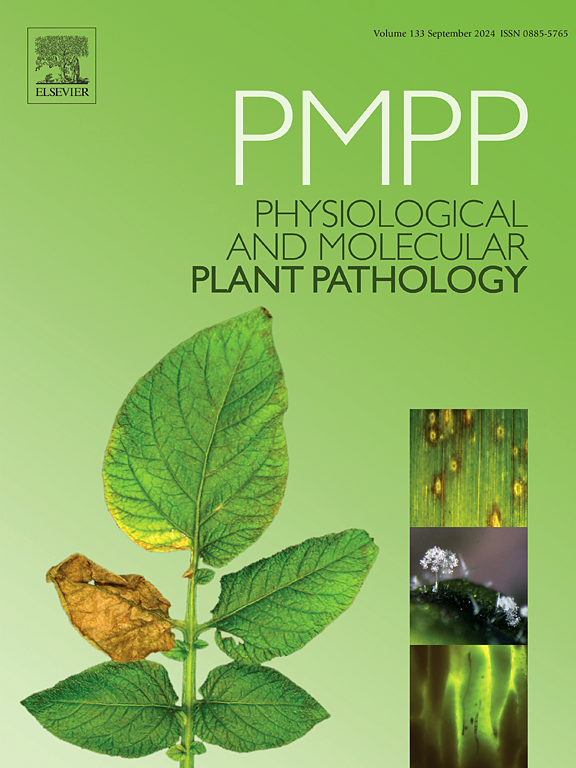Botrytis cinerea protease activity removes the chitin-binding domain of a major grapevine chitinase, abolishing its antifungal activity
IF 2.8
3区 农林科学
Q2 PLANT SCIENCES
引用次数: 0
Abstract
Chitinases are crucial components of plant defence against fungal pathogens, hydrolyzing chitin in fungal cell walls and triggering immune responses. Botrytis cinerea, a highly destructive necrotrophic fungal pathogen causing grey mould disease on several crops, employs sophisticated strategies to counteract plant defence mechanisms, including neutralizing pathogenesis-related (PR) proteins like chitinases. This study elucidates how B. cinerea cleaves the major grapevine chitinase IV (UniProt Q7XAU6) contained in grape berries and leaves. The pathogen secretes protease that cleaves the N-terminal chitin-binding domain (CBD) of the 31 kDa chitinase, generating a 28 kDa intermediate and eventually a 26 kDa product. The final product lacks antifungal activity against spore germination and hyphal elongation, despite retaining approximately 50 % of its enzymatic activity. The inhibition of the 28 kDa intermediate's cleavage by a metalloprotease inhibitor suggests that a deuterolysin-type protease may be responsible for releasing the 26 kDa product. During B. cinerea infection of grapevine leaves, chitinase IV expression is induced, with the protein accumulating as the infection progresses and declining in fully necrotized tissue. The cleaved form of the protein was also detected in infected tissues. This proteolytic mechanism complements other strategies employed by B. cinerea to overcome the grapevine chitinase defence, highlighting the complex molecular interplay between the pathogen and its host and the adaptability of this fungus.
求助全文
约1分钟内获得全文
求助全文
来源期刊
CiteScore
4.30
自引率
7.40%
发文量
130
审稿时长
38 days
期刊介绍:
Physiological and Molecular Plant Pathology provides an International forum for original research papers, reviews, and commentaries on all aspects of the molecular biology, biochemistry, physiology, histology and cytology, genetics and evolution of plant-microbe interactions.
Papers on all kinds of infective pathogen, including viruses, prokaryotes, fungi, and nematodes, as well as mutualistic organisms such as Rhizobium and mycorrhyzal fungi, are acceptable as long as they have a bearing on the interaction between pathogen and plant.

 求助内容:
求助内容: 应助结果提醒方式:
应助结果提醒方式:


